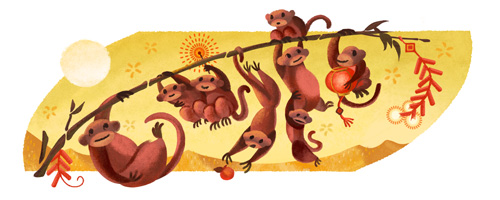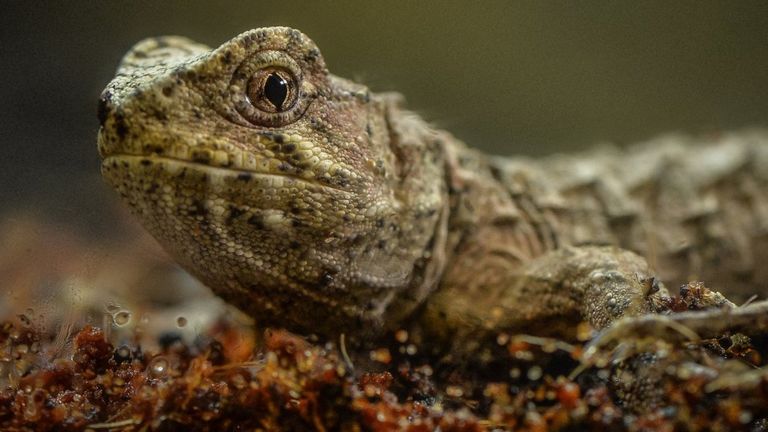If there's a pattern to where the truly great zoos in the United State are, I haven't found it yet. Sure, it makes sense that the biggest cities would often have great zoos - look at the
Bronx or the Chicago zoos. You'd also figure that southern zoos, with their warm climates enabling animals to be outdoors year round, would also have an advantage, and again, you'd be right. Still, you can find some fantastic zoos - some of America's best - in cities where you would never expect to find them.
Cincinnati Zoo, at the bottom of Ohio, is one such facility. At the northern end of the state, Toledo Zoo is another.
At the time of my visit to Toledo Zoo, the big news was the reopening of the zoo's historic Aquarium (the zoo has since added "& Aquarium" to its name). It was built in what seems to be the new style of aquariums - much lighter, brighter, and airier, as compared to the dark museum galleries of the past. Not tremendously big by aquarium standards, I got the impression that it was designed and stocked by someone like me - that is, someone who'd visited a lot of aquariums and had walked away with a checklist of what the iconic, must-have species were that would most appeal to visitors. Among those were
red-bellied piranhas,
giant Pacific octopus, green sea turtle, and bonnethead sharks (think mini-hammerheads). As befitting Toledo's location on the Great Lakes, native freshwater fish were also displayed. Outside,
African penguins could be viewed above and below the surface of the water.
The Aquarium is one of several Depression-Era buildings that dot the zoo grounds. Their numbers also include the Reptile House and the Aviary. The Reptile House, studded with life-sized sculptures of pterosaurs (flying prehistoric reptiles), featured several galleries of species from around the world, including endangered local species, such as the massasauga rattlesnake. Also represented were Virgin Island boas, an endangered Caribbean species that Toledo Zoo has been involved with conserving for several years. For the zoo professional, the most interesting exhibit will likely be the room-sized
tuatara display, but most visitors will have a hard time not marching straight past the lizard-like relics to the back of the building, home to a massive saltwater crocodile.
The Aviary isn't to be outdone, either in beauty of exhibits (here it probably surpasses the Reptile House) nor in the quality of its collection. While
saddle-billed storks,
double-wattled cassowaries, cinereous vultures, and a host of pheasants can be found across the zoo, the main bird collection is found in yet another WPA building. Some of the exhibits are viewed through nearly-invisible mesh, others are walk-through galleries. Many contained species I'd only rarely seen before, including
cock-of-the-rock, buttonquail, and my very first
kagu (a big, crested bird from New Caledonia, very rare in zoos). Birds are in many ways a specialty of the zoo, which boasts its own Avian Propagation Center. Outside the Aviary,
American flamingos share a pool with a wide variety of ducks from around the world.
Two often neglected taxa of animals - amphibians and invertebrates - can be observed in the Museum of Science building. One gallery displays insects and their relatives, another focuses on endangered amphibians (Toledo was once known as Frogtown USA). Like the Reptile House, it's a single giant - in this case, a
Japanese giant salamander - which wows the crowds, but the most important displays here are the two glassed-in rooms. Here, zoo staff work to breed and rear for reintroduction two of the world's most endangered amphibians - the
Kihansi spray toad and the
Wyoming toad.
Toads and tuataras and kagus aside, if there is one animal for which Toledo is best known, it's the hippopotamus (the zoo's street address is 2 Hippo Way). Toledo's Hippoquarium was the first exhibit to offer underwater viewing of the big beasties, and it still has the best exhibit I've ever seen of them. Visitors have even observed hippos giving birth (underwater) before their very eyes in this display, something researchers in Africa could only dream of observing. When you see a hippo float past you, so silent despite being so big, and suddenly open its tusk-filled maw and hurl water in the air, you'll never think of them as boring again. The hippos are found on what the zoo calls it's
Tembo Trail; "Tembo" is Swahili for "elephant", and the African elephants are indeed found along this trail (complete with a
behind-the-scenes look at their barn), along with lions,
meerkats, white rhinos, and spot-necked otters. More African animals, including giraffes, zebras, and ostriches, are found in a separate area.
What the zoo began with hippos it has continued with polar bears in an equally breathtaking exhibit. Polar bears and their natural prey - grey and harbor seals - can be seen in exhibits that are not only side-by-side, but overlap. The polar bear land area is directly over the seal pools (seen through underwater windows), creating the illusion that the bears are waiting for seals to pop out of a hole for a breath. The bears and seals can be seen from a viewing building that serves as an Arctic education resource; and I was pleased to see the zoo not shying away from climate change controversies (it also walks the walk - the first thing I saw when I entered the zoo was the parking lot, which was full of solar panels). Outside, a pack of white Arctic wolves roam a grassy yard and can be viewed from a log cabin.
Other large mammals seen around the zoo include tigers,
sloth bears, and snow leopards (seen in some average-quality exhibits near the flamingos), cheetahs in a separate area, and a collection of primates by the Aquarium. Gorillas and orangutans inhabit one building, while gibbons and New and Old World monkeys (along with red pandas) occupy another. Not bad exhibits, but nowhere near as breathtaking as many of the others. In the near future, the zoo plans to unveil an exhibit area devoted to rivers (new habitat for the hippos, as well as grizzly bears and giant otters, among others) and another themed around animals in the age of exploration. The stars of this will be the
Galapagos tortoises, currently housed by (or, during the winter, inside) the zoo's Conservatory. Unfortunately, my visit to Toledo was slightly too early, and I missed the unveiling of its new
Tasmanian devil exhibit.
One last note about Toledo, and a plug that I don't often make - eat lunch here. Yeah, zoo food is often expensive, but here, it's not the meal, it's the atmosphere. The old Carnivora House, former home to lions, tigers, and other big predators, has been refurbished as a cafe, and visitor can dine in the indoor or outdoor cages. Quite a place to grab a bite while reflecting how far zoos have come.




















